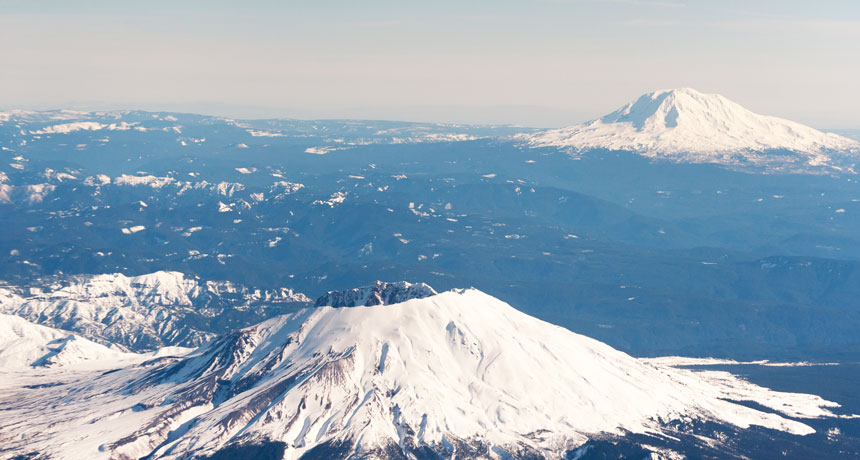Mount St. Helens is a cold-hearted volcano

Below most volcanoes, Earth packs some serious deep heat. Mount St. Helens is a standout exception, suggests a new study. Cold rock lurks under this active Washington volcano.
Using data from a seismic survey (that included setting off 23 explosions around the volcano), Steven Hansen, a geophysicist at the University of New Mexico, peeked 40 kilometers under Mount St. Helens. That’s where the Juan de Fuca tectonic plate releases fluids due to intense heat and pressure as it descends beneath the North American plate. Those fluids rise and trigger melting in the rock above, fueling an arc of volcanoes that line up like lights on a runway. All except for Mount St. Helens, which stands apart about 50 kilometers to the west. Still, Hansen and colleagues expected to see a heat source under Mount St. Helens, as seen at other volcanoes.
Instead, thermal modeling revealed a wedge of a rock called serpentinite that’s too cool to be a volcano’s source of heat, the researchers report November 1 in Nature Communications. “This hasn’t really been seen below any active arc volcanoes before,” Hansen says.
This odd discovery helps show what the local crust-mantle boundary looks like, but raises another burning question: Where is Mount St. Helens’ heat source? Somewhere to the east, suggests Hansen. Exactly where, or how it reaches the volcano, remains a cold case.
Editor’s Note: this article was revised on January 4, 2017, to note how the Juan de Fuca tectonic plate fuels the chain of volcanoes.